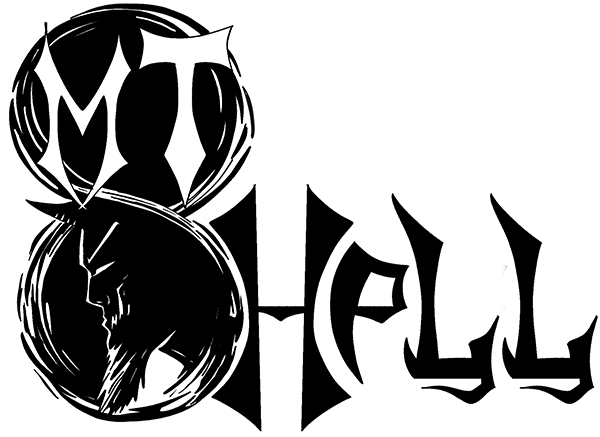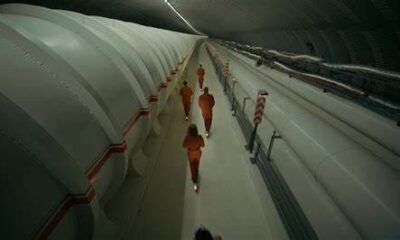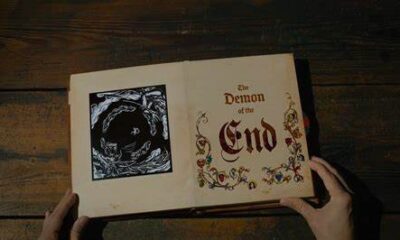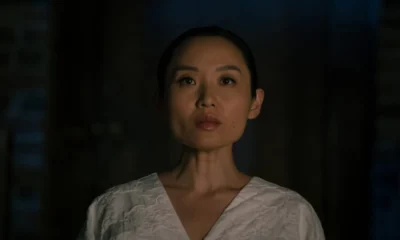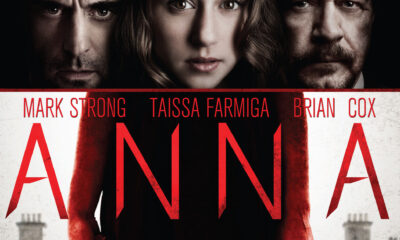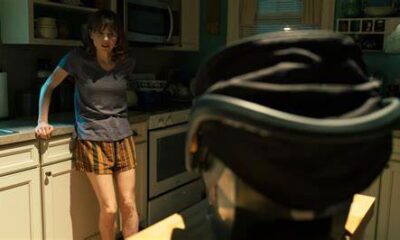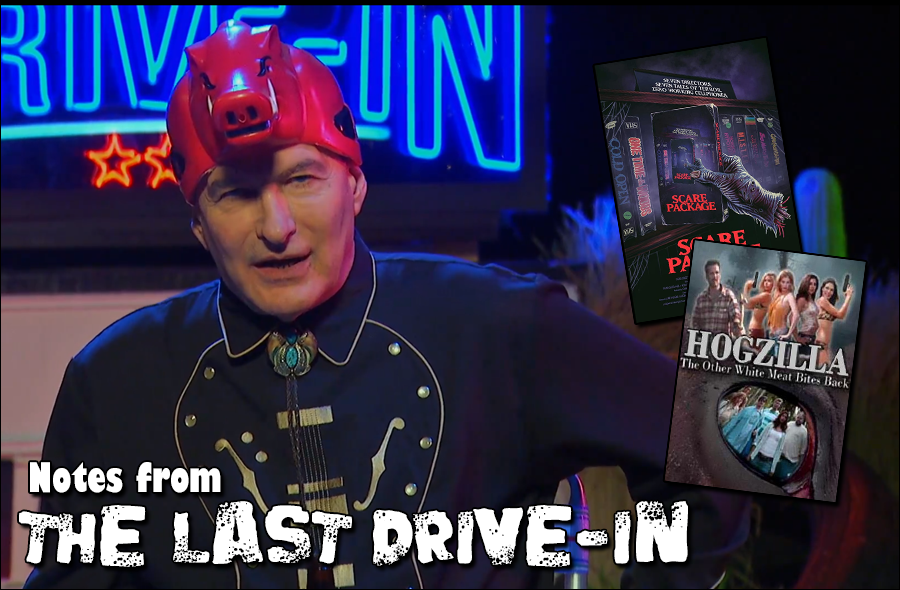
Notes from The Last Drive-In: S2E8
This might be the best night in the history of The Last Drive-In, especially in a season that has largely been nothing but highs. We not only get an excellent anthology in Scare Package but we get the infamous, the legendary, Hogzilla. A night so full of Joe Bob he was also in the damn movies!
Scare Package (2019)
Opening Rant: Graceland!
How the hell do I review an anthology given the current format of Notes from The Last Drive-In? One segment at a time, apparently. Scare Package is a hilarious horror-comedy anthology comprised of seven films that tackle different horror genres and have their own unique style. As a whole, the anthology is largely excellent and worth a rewatch. At an individual level, however, some of the segments are stronger than others.
I say seven films, as that is how Scare Package was marketed, but that is slightly misleading as the cold open and framing decide end up also coming together into a third, distinct narrative. As such, we technically have eight narratives, not counting the overall package itself, the anthology. Between the first half of the night and the last half, then, I need to review 10 things.
You’re killing me, Joe Bob. So, I guess we dive in then?
“Cold Open” / “Rad Chad’s Horror Emporium”
“Cold Open” is a fun little way to start the anthology, presenting a suitably meta riff on horror tropes and displaying a goofy and endearing earnestness. Jon Michael Simpson’s Mike Myers and his simple desire to have a bigger part than a bit player make for a nice, quick narrative that also features some decent horror references. Mike’s story segues nicely into the framing narrative, “Rad Chad’s Horror Emporium.”
“Rad Chad’s Horror Emporium” is not really much in the way of a story as it is more written into small sketches that move viewers between segments. With that being said, the framing device really works. It’s a fun video store with a goofy owner, a new guy, and a frequent customer. Each framing segment features plenty of gags for horror fans. Jeremy King’s Chad Buckley is the clear focus of these moments and his broad, obsessive characterization works quite well, particularly with the later payoff of the final segment.
Joe Bob’s assessment of these two segments was glowing, at four stars. While I think “Cold Open” was more entertaining, “Rad Chad’s Horror Emporium” is no comedy slouch either. Staying in line with Joe Bob’s scoring, I’d put the two of them together at four and a half Cthulhus.
 (4.5 / 5)
(4.5 / 5)
“One Time in the Woods”
A few of these segments are more like sketches than real narratives. But that is a given with anthologies, especially with an anthology so absolutely stacked full of stories. Granted that this is no The ABCs of Death, but there are still a lot of segments, here. “One Time in the Woods” is a wacky and I dare say Pythonesque bit. I reminded me of the classic “Sam Peckinpah’s ‘Salad Days'”sketch from Flying Circus.
Joe Bob gave “One Time in the Woods” four stars and as a sketch I completely agree. It’s hilarious, gory, and I was laughing so much I had to stop taking notes. I give it five Cthulhus.
 (5 / 5)
(5 / 5)
“M.I.S.T.E.R.”
“M.I.S.T.E.R.” is an interesting idea that feels a little too scattershot and undercooked. It features some very familiar faces (Noah Segan and Jon Gabrus) and a hilarious segment of werewolf slaughter, but the logic of the story is a little weak and it feels strung together as a whole. The connection between predatory werewolves and Men’s Rights Advocacy makes a lot of metaphorical sense and is worth exploring. It just does not necessarily work here.
Joe Bob gave “M.I.S.T.E.R.” two and a half stars. That seems about right. I give “M.I.S.T.E.R.” three Cthulhus.
 (3 / 5)
(3 / 5)
“Girls Night Out of Body”
“Girls Night Out of Body” was not the strongest of the narratives but it was more developed than a few of the other segments. Where “Girls Night Out of Body” succeeds is in style. This was the most gorgeously shot and arranged of the segments with bold color choices reminiscent of Giallo. The lack of a strong narrative here works against it but as an anthology segment it still ends up being fun. It presents some cool visuals and has a fun, if not particularly deep, story. It works well enough for its runtime.
Joe Bob gave it about two stars. I feel like he was a bit stingy here. I was more enthused by it, giving it three and a half Cthulhus. I’ll be first in line when they expand it into a full movie.
 (3.5 / 5)
(3.5 / 5)
“The Night He Came Back Again! Part IV: The Final Kill”
Another segment that feels more like a sketch than a story, but it is absolutely hilarious. For my money, it might tie with “One Time in the Woods” for the funniest segment of the anthology. This segment is presented as being part of the ending to a longer film. We catch the finale of the slasher where the protagonists have captured the clown-killer and try to dispose of him in hilarious and graphic ways. This segment might be the tropiest of the bunch.
Joe Bob gave this one four stars. He likes the messy ones, apparently. I give this one four Cthulhus.
 (4 / 5)
(4 / 5)
“So Much To Do”
MST3K-alumn Baron Vaughn’s “So Much to Do” is a cute little segment. It’s pretty cheesy down to stock 1980s title cards on the TV, and it’s definitely more on the skit-side of the anthology spectrum. The fight is fun and the crosscutting between the living room and the tv-show makes for some frantic editing here and there. The story makes little sense, but beyond that it’s still pretty neat.
Joe Bob only gave it two stars. I am a bit more generous, particularly because I am a fan of Vaughn and I am allowed to play by my own rules. I give it three Cthulhus.
 (3 / 5)
(3 / 5)
“Horror Hypothesis”
The largest and most developed segment of the anthology ends up being the strongest one, narratively speaking. It also features one of the best Last Drive-In twists… at least until Hogzilla later that night. This segment builds on “Cold Open” and “Rad Chad’s Horror Emporium” taking the Chad character and putting him into his own little meta-horror film. All of the gags built around researching horror and the lampshade-hanging present are worth a laugh. I put it pretty succinctly in a tweet during the marathon.
The film predates the Joe Bob Briggs’ resurgence via Shudder a bit so it is fantastic to see a movie that thinks so highly of him that they brought him in. Joe Bob plays himself here and it is every bit as funny as you’d expect. The segment also features Goldust himself, Dustin Rhodes, as the tragic serial killer.
Joe Bob had some fun stuff to say about the movie, but considering each break was the presentation of more and more Drive-In Totals this is probably one of the lesser nights for the level of film insight we are used to. But you know what? That’s okay. It was a stacked night. Scare Package didn’t get an overall rating, but “Horror Hypothesis” did at four stars. so I have no stars to report beyond the individual segments. As for me, I give Scare Package four and a half Cthulhus.
 (4 / 5)
(4 / 5)
Best Line: No line needed when we have this absolute gem of a Tweet.

Hogzilla
Opening Rant: Joe Bob can’t even right now.
Hogzilla is one of those monkey paw sorts of movies. It obtained an almost mythical status among viewers. The MutantFam hyped the film up to a huge degree because it starred Joe Bob Briggs and was considered a lost film that never really saw release. A film so neglected it took Diana Prince, our very own Mail Girl, to engage in tracking it down and getting a re-edit of the film prepared to be shown on Shudder.
The problem is, Hogzilla isn’t very good at all. It’s more of a curiosity than a movie. I mean, just read this synopsis according to IMDB.
A tabloid news crew ventures into the backwoods of Central Florida to investigate reports of an aggressive feral hog who the locals call Hogzilla. What they find, though, are demons, devils, creeping things and pure evil.
Hogzilla synopsis courtesy of IMDB
This is not the movie we saw during The Last Drive-In. The above sounds vaguely structured and at least conceptually weak but still somewhat sound. It’s hard to really view Hogzilla as a movie at all. It’s some sort of tulpa of Drive-In wackiness we have collectively willed into existence.
And yet it made for a memorable and delightful evening.
The movie teases an showdown with a giant, feral hog and never really delivers a satisfying glimpse of the beast. Budget and technical issues prevent than and most of the hog-murder-action comes in the form of offscreen antics and POV shots from the porcine killer. It’s like a backwoods Floridian JAWS, only without any real merits beyond a surprisingly earnest performance by Joe Bob Briggs.
Joe Bob Briggs, also known as John Bloom, is not just our favorite horror host, but an author and actor. He’s been in some good movies and he’s not a bad actor in the least. He’s never really had to carry a movie, but he is certainly no slouch when he’s popped up in different films. Sure a great many of these rolls are the sort of wink-wink-nudge appearances you expect from movie-obsessed directors, but appearances in The Stand, Great Balls of Fire!, Casino, and Face/Off are genuinely pretty good moments on his part.
So it was fitting that the only real thing that worked in Hogzilla was Joe Bob Briggs. It’s impossible for anyone to carry Hogzilla but we spent an hour and thirty minutes watching him do his best and it was pretty damn satisfying. At this point I don’t know if Joe Bob can really get more serious, non-winking film roles, but the guy deserves some.
Joe Bob had Hogzilla sprung on him (as much as a scripted movie marathon show can “spring” anything on the guy who writes it) but it was a genuinely charming and entertaining night, leading in from Scare Package, where he kept needling Darcy about the second film and playing it with all the spoiled, requisite grumpiness we’d expect. The segments surrounding the feature were a treat with what appeared to be a progressively more hammered Joe Bob Briggs poking fun at himself and the movie.
The biggest moment of the night, however, was the delivery of the Drive-In Totals by Darcy. This was a Drive-In first. I have loved all the mail girls across the various Joe Bob shows but Darcy is the best of them all, shaping her role into more of a co-host than a supporting player. Tonight proved that Darcy is absolutely indispensable to The Last Drive-In with Joe Bob Briggs. The show may be named after Joe Bob Briggs but Darcy has become the beating heart of the community that has grown around the show.
Not only does she provide a fun foil to our host but she has her own impact through cosplay, checking Joe Bob on dumb crap he sometimes rattles off, and going above and beyond the role of the supporting character. She accompanies Joe Bob across the country on his tours, she live-tweets with the MutantFam, and she has networked to get great guests and Hogzilla onto the show.
We should all be so lucky to find a collaborator and friend like Diana Prince in our own lives. Joe Bob and Darcy are The Last Drive-In.
Darcy’s take on Hogzilla was that of a cheerleader. I don’t mean that in a dismissive way, either. Hogzilla is a great moment for the show and I get the four-star rating. It made for an amazing episode of television. However, I can’t really give Hogzilla a pass. It’s a one and a half star film, and that one star is reserved for Joe Bob, the only bright spot in that mess.
 (1.5 / 5)
(1.5 / 5)
Best Line: “It’s gonna get nasty.”
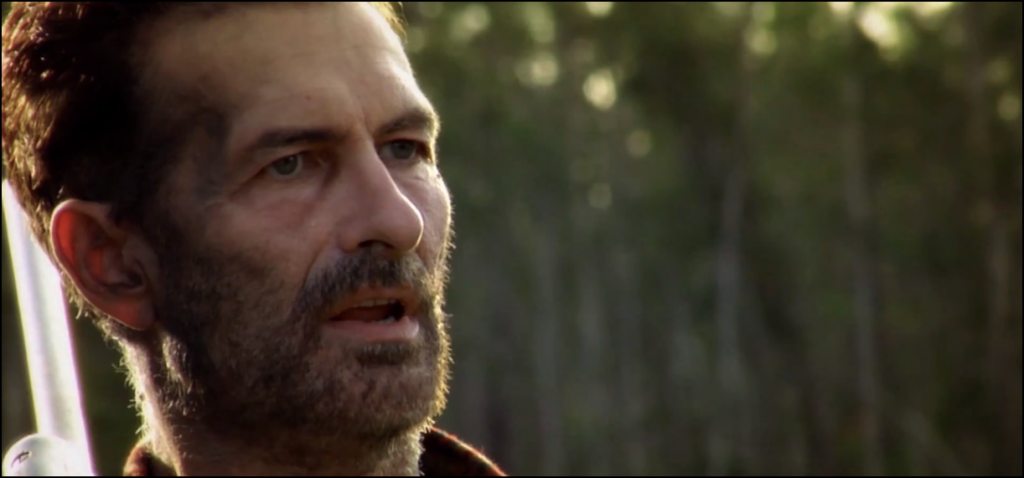
Haunted MTL Drive-In Totals
We have a lot of Drive-In totals tonight, and Drive-In Total history as well. Each segment of Scare Package received its own totals, and Darcy got to share the Drive-In Totals for Hogzilla. What a night!
What, you think we’re done? Nope, we have our own totals. A smaller set, but Totals none the less!
- 8 Directors
- 4 Cold Opens
- 6 Attempts to Kill the Killer
- Shear Fu
- Cracker Barrel Fu
- Epistemology Fu
- The-Ate-Er Fu
- Wilhelm Fu
- Denouement Fu
- Hurricane Fu
- Ghost Fu
- Corpse Digging
- Shoplifting
- Bowel Shitting
- Macguffin Dropping
- Horror Host Joking
- Religious Joking
- Darcy Jailing
- Tusk Stuffing
- Blonde Joking
- Meta Madness
- Graceland Darcy
- Gratuitous Joe Bob
- Tactical Piggy Hat
- Darcy Cosplay: Joe Bob Briggs
- Silver Bolo Winner: The Signal Podcast

Episode Score
File this episode under “all time great.” I am curious if The Last Drive-In is going to even attempt to top this one.
 (5 / 5)
(5 / 5)
Remember, folks, keep your hogs at bay lest ye end up prey to the mighty Hogzilla. Also, join us for the live-tweet session during The Last Drive-In season two finale next Friday!
Movies n TV
Wheel of Time A Question of Crimson Is a Political Espionage Delight
Episode two of Wheel of Time felt like the beginning of a long journey. Stories are unfolding, lives are changing, and blood is spilling.
Let’s discuss.
The story
We begin this episode in the past with Elayne’s mother, Queen Morgase. It turns out her rise to the throne was a bit, shall we say, cutthroat. So when she shows up at the White Tower, Siuan is concerned.
She might have reason to be, too.
Meanwhile, Rand, Egwene, Moiraine, Lan and Aviendha are in the Spine of The World. As they travel through some of the most breathtaking lands I have ever seen on a TV show, Egwene is plagued with nightmares. We think at first that’s just her trauma working itself through her system. But we soon find out that it might not be that straightforward.
Finally, Perrin returns home to heal after his hand is almost cut in half. But when he gets there he finds the town has been infested by Children of The Light. And they’re looking for him.
What worked
There was something heartwarming in this episode about political espionage and choking religious persecution. And that is Elayne’s relationship with her family.
I have consumed a lot of fantasy content with royal families. And I have never once heard a princess call her mother ‘Mum’. I’ve never seen royal siblings get along. And I have sure as hell never seen a princess have a good relationship with her step-parent.
This was refreshing. Even though Queen Morgase is kind of a horrible person she seems like a good mother. And that’s an unexpected delight.
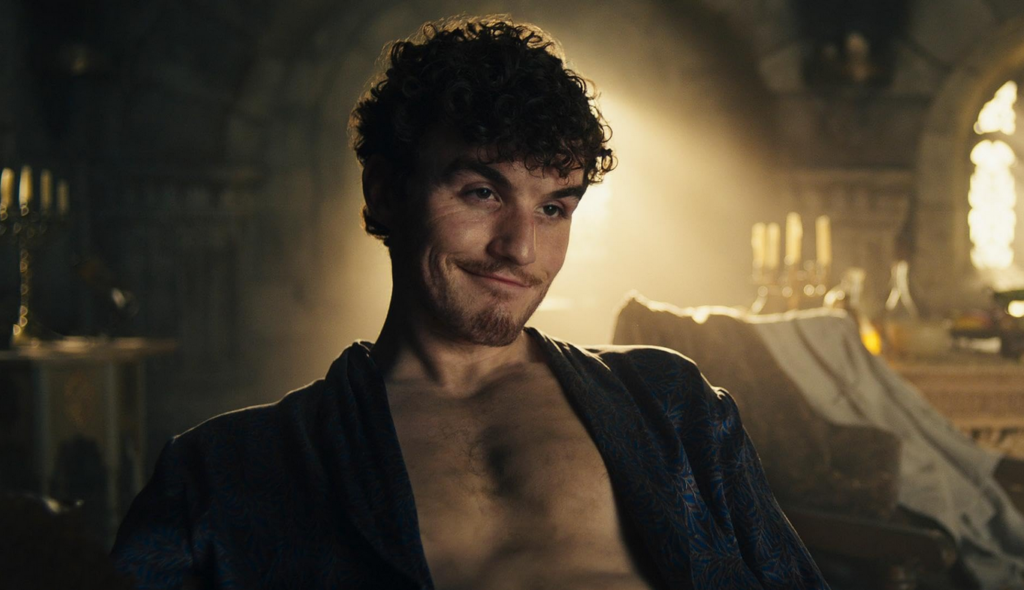
Of course, this is just one storyline among many. And while this can sometimes be overwhelming, in this case it wasn’t.
I’ll be honest, some of these storylines are going to drag for me. I know this because I’ve read some of the Wheel of Time books and I have an idea that not all the characters exactly pique my interest.
No one likes all the characters. No one likes all the storylines. While I am here for the political espionage between Queen Morgase and Siuan, not everyone likes it. While others might be fascinated with Selene trying to win Rand back, I couldn’t care less.
Having multiple storylines keeps everyone’s attention better. So long as things don’t get out of hand. Things can easily get out of hand. But this seems to be managed well.
So far.
What didn’t work
As I mentioned above, I’m not thrilled with Rand’s story at this point. And while it’s fine to not like a storyline when there are this many to choose from, it’s not fantastic that the one I like the least is the one involving our two main characters. And anytime we were with the team at the Spine of The World, the only thing that brought me joy was Moirain’s hat. It reminded me of Stockard Channing’s hat in Practical Magic.
The problem is that Rand is Charlie Brown with controversial magical powers. He is boring, serious, and pessimistic.
And yes, I understand that he has a heavy emotional burden and he’s the Dragon Reborn and that’s quite taxing and all. But let’s be fair, there isn’t a single person in this show that doesn’t have a heavy burden. And most of them manage to be fun occasionally.
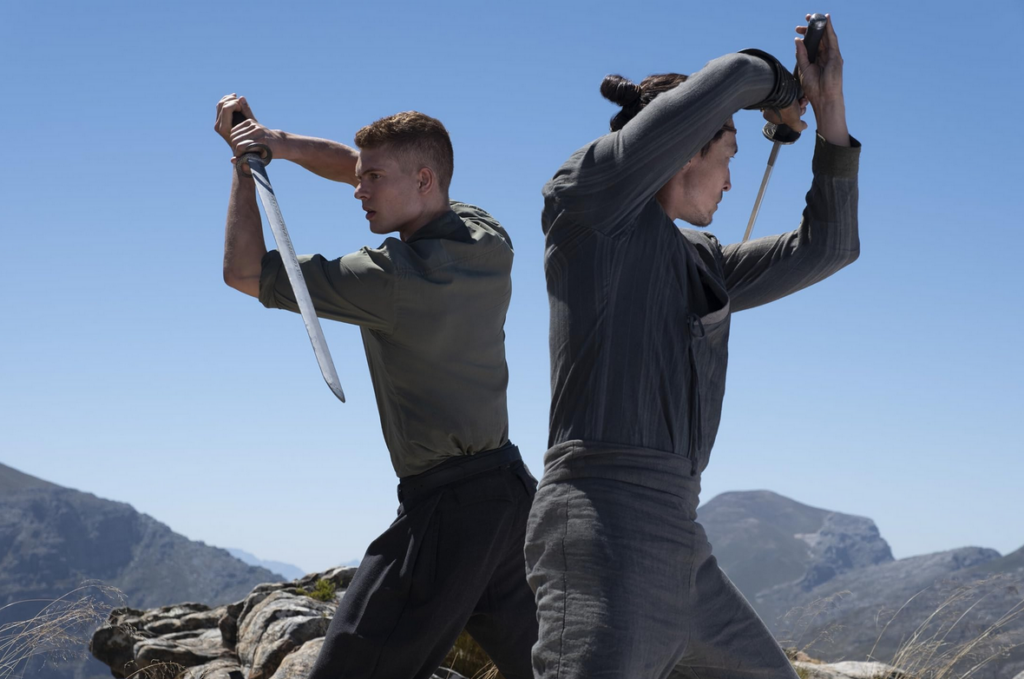
All that being said, this episode of Wheel of Time did exactly what it needed to do. It set up conflicts at each of the three locations. It established emotional ties between the characters and the events. And it established goals for everyone.
This was, in short, a solid episode. Not groundbreaking, not mind-blowing or life changing. It was simply good. It was entertaining and moved the plot forward.
Well done.
 (3.5 / 5)
(3.5 / 5)
Movies n TV
Wheel of Time Returns With A Bang
Wheel of Time is back for season three. There are mixed feelings regarding this. Last season, there were some serious pacing issues. And some serious sticking to the book’s storyline issues. But we’re two seasons in, and we don’t give up so easily. So let’s dive into episode one, To Race the Shadow.
By the way, I highly recommend watching this episode with the subtitles on. You’ll see why.
The story
We begin this episode with Liandrin facing a trial of sorts for her rampant betrayal. She does her best to gaslight her Aes Sedai sisters into thinking that Siuan Sanche is the real traitor.
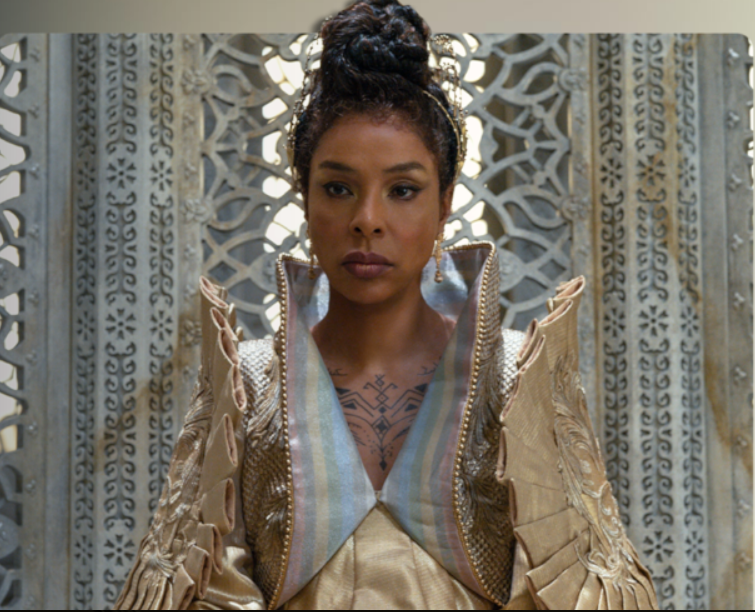
When that doesn’t work, she reveals how many Black Aes Sedai have actually infiltrated the tower.
Spoiler, it’s a lot.
In the aftermath, our whole team gathers to drink and enjoy one night of relaxation before they head out to the Tear to form an army for Rand. All is going well until they’re attacked by myriad creatures and a sentient axe.
What worked
This episode was long. It had a run time of an hour and eleven minutes. And a lot of that run time was spent in heavy dialog scenes.
Fortunately, these were well-done scenes.
If you’re going to have a lot of talking scenes, there are good ways and bad ways to do it. Last season, we saw lots of examples of the bad way to do it. But this episode did it well. For one thing, other things were going on while conversations were taking place. The characters are drinking, playing games, walking through an interesting city. And the scenes themselves didn’t stretch out. They weren’t repetitive. We heard what the character had to say, then we moved on.
It was also nice that the point of these scenes wasn’t just info dumps. We had character development. We had romantic interactions. We had plot development and foreshadowing.
Overall, this episode felt like what it was. A moment of calm before a storm.
Taking a step back, I’d be remiss if I didn’t address the fight scene at the start of the episode. Because it was epic.
The magic looked amazing. The martial arts that went along with it looked fantastic. The costumes were beautiful. It was just incredibly fun to watch.
More than that, it was emotional. We lost some characters in that fight that were important. And it was clearly emotionally shattering for many of our characters, who found themselves betrayed by people they trusted.
So many of them.
It was a great way to open the season.
What didn’t work
Despite that, this episode wasn’t without its flaws.
First off, there were a lot of dialog scenes. And they were good scenes, as I’ve already discussed. But it was one after another after another. And when your episode is, again, an hour and eleven minutes, it’s maybe a little much to have so much chit-chat. Couldn’t some of these conversations, important as they were, have been moved to maybe another episode?
Finally, I want to talk about Egwene’s travel through the arches.
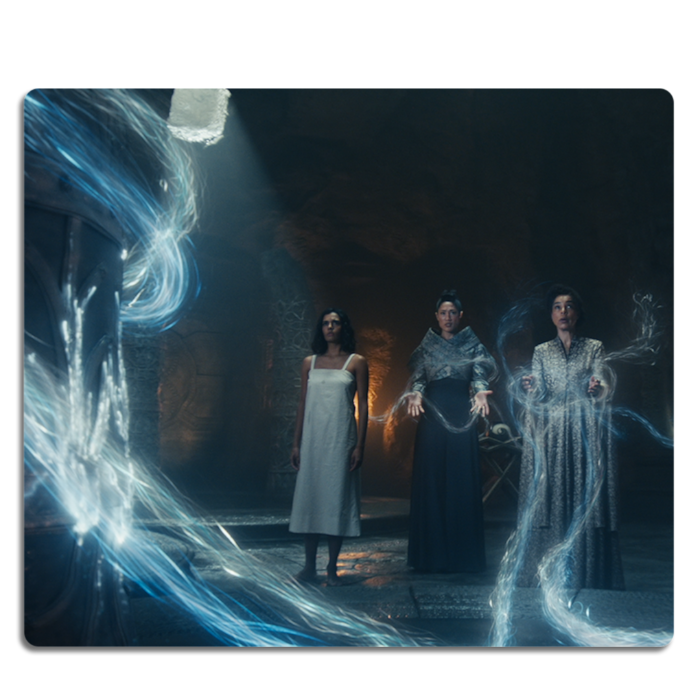
I feel like maybe there were some deleted scenes here. Because there must have been more to that visit than what we saw, right?
We could have seen Egwene battle Rand. That would have been badass and emotionally devastating. We could have seen her with a quiet life with Rand back home at the Two Rivers. We could have seen anything except for the quick clip of Rand in a bloody river, followed by Egwene being shoved back out in a bloody shift.
No products found.
Bad job. But at least it wasn’t an extended scene of Moiraine collecting bathwater, and then taking a bath while looking sad. If we’d started this season with another scene like that, it might have broken my brain.
Amazon dropped the first three episodes at once. So we’ll be back soon to talk about episode two. See you then.
 (4 / 5)
(4 / 5)
Movies n TV
Entertaining as hell: Eight Legged Freaks (2002) Review
Early 2000s is a special era for the industry. It accepts the cheesiness and corniness of movie making, in turn producing some gems in their own right. Eight Legged Freaks starring David Arquette and young Scarlet Johanson is a horror comedy about giant spiders who overtake a small town. As crazy as that premise sounds, the movie surprisingly has a ton of heart and is super entertaining. Let’s review, shall we?
Plot
We start Eight Legged Freaks with a shot of toxic waste spilling into the water supply of Joshua, a spider farm owner. He is friends with Mike, one of our protagonists, who is a science geek and a spider enthusiast. Mike notices something quite right upon visiting Joshua, but no one takes him seriously. We are then introduced to the rest of the crew. Mike’s mother Samantha, the town sheriff, is too busy chasing Ashley, his sister, who is dating the town mayor’s son Bret (something Samantha does not approve of). We also have Chris, who returns to the town to save his father’s legacy in the town mines. He has opposition from Wade, Bret’s father, who wants to use the mines for his business ventures. Lots of drama going on that will only get juicier once the spiders get loose.
The creepy crawlies quickly dispose of Joshua and make their grand appearance after Ashley rejects Bret’s advances, abandoning him in the middle of a desert. A glorious chase sequence ensues as the spiders make their way towards the town, wreaking havoc on its residents. In a true horror fashion (which the movie acknowledges), it takes some convincing from Mike and then from Samantha for the town to take the threat seriously. The tongue-in-cheek style of narrative adds the comedy aspect to a movie that would otherwise burn out fairly quickly.
The remaining characters hide out in a shopping mall as it’s the only somewhat sturdy building in the area. This doesn’t last long as the spiders break in, forcing them to run through the mines. Their resources to fight the creepy crawlies off are limited as the methane gas doesn’t allow them to use firearms. Such conditions require resourceful thinking from Chris, who uses perfume to fend off the leader of the spider group and save himself during the climax of the movie.
Character dynamics are not forgotten once the action kicks in. We have Chris confessing his long-term feelings for Samantha which she knew all along, which provided some comedic relief. Bret also reunites with Ashley and apologises for being an asshole. Mike finally gets the appreciation he deserves as his knowledge saves the townsfolk more than once during the whole ordeal.
We end the movie with the town’s radio show person telling the story as an urban legend during his segment. This brings it into question – how much of it happened the way he said it did? We can only guess…
Overall thoughts
Eight Legged Freaks is a fun creature feature with some self-aware commentary on genre tropes that doesn’t take itself too seriously. The acting is good, the pacing fitting and the characters are likeable enough for you to want them to make it through. Definitely a must watch, if you don’t suffer from arachnophobia, that is.
 (5 / 5)
(5 / 5)
- What do you get when you cross toxic waste with a bunch of exotic spiders? Eaten! The townies of Prosperity, Arizona will all become a screaming smorgasbord if mutated arachnids as big as SUVs have their way in this comedy/horror crowd pleaser whose creators include the producers of Independence Day and Godzilla
- Spiders that leap like gazelles, web-spitting spiders, spiders that suck your insides out as if through a straw—they’re all among the behemoths conjured up by an inventive effects team
- David Arquette (Scream) leads the two-legged stars, mobilizing the citizenry in a last-ditch fight to survive
Last update on 2025-03-10 / Affiliate links / Images from Amazon Product Advertising API

